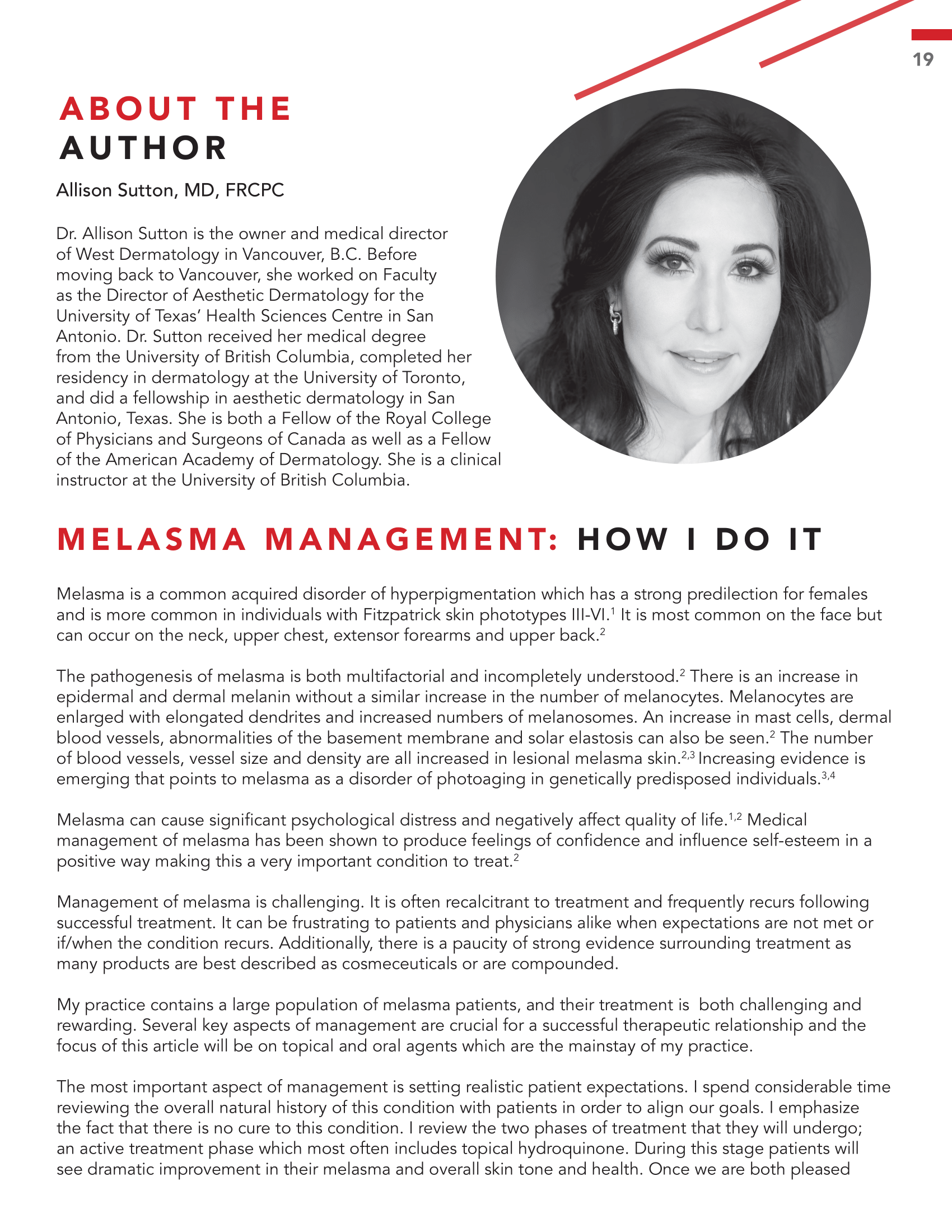Melasma Management: How I Do It
Abstract
Melasma is a common acquired disorder of hyperpigmentation which has a strong predilection for females and is more common in individuals with Fitzpatrick skin phototypes III-VI. It is most common on the face but can occur on the neck, upper chest, extensor forearms and upper back.
The pathogenesis of melasma is both multifactorial and incompletely understood. There is an increase in epidermal and dermal melanin without a similar increase in the number of melanocytes. Melanocytes are enlarged with elongated dendrites and increased numbers of melanosomes. An increase in mast cells, dermal blood vessels, abnormalities of the basement membrane and solar elastosis can also be seen. The number of blood vessels, vessel size and density are all increased in lesional melasma skin. Increasing evidence is emerging that points to melasma as a disorder of photoaging in genetically predisposed individuals.
References
Nomakhosi M, Heidi A. Natural options for management of melasma, a review. J Cos Las Therapy. 2018;20:470-81.
Huerth K, Hassan S, Callendar V. Therapeutic insights in melasma and hyperpigmentation management. J Drugs Dermatol. 2019;18(8):718-29.
Kwon SH, Hwang YJ, Lee SK, Park KC. Hetergeneous pathology of melasma and its clinical implications. Int J Mol Sci. 2016;17:824-34.
Passeron T, Picardo M. Melasma, a photoaging disorder. Pigment Cell Melanoma Res. 2018;31:461-5.
Miller Monthrope Y. An update on the management of facial hyperpigmentation: is there anything to use other than hydroquinone? Canadian Dermatology Today. 2020;1(4);6-11.
Draelos Z. Skin lightening preparations and the hydroquinone controversy. Dermatologic Therapy. 2007;20:308-11.
Boukari F, Jourdan E, Fontas E, Montaudie H et al. Prevention of melasma relapses with sunscreen combining protection against UV and short wavelengths of visible light: a prospective randomized comparative trial. J Am Acad Dermatol. 2015;72(1):189-90.
Rodrigues M and Pandya A. Melasma: clinical diagnosis and management options. Austalasian Journal of Dermatology. 2015;56:151-63.
Ibrahim Z, Gheida S, El Maghraby G and Farag Z. Evaluation of the efficacy and safety of combinations of hydroquinone, glycolic acid, and hyaluronic acid in the treatment of melasma. J Cosmetic Dermatology. 2015;14:113-23.
Kwon SH, Na JI, Choi JY, Park KC. Melasma: updates and perspectives. Experimental Dermatology. 2019;28:704-8.


